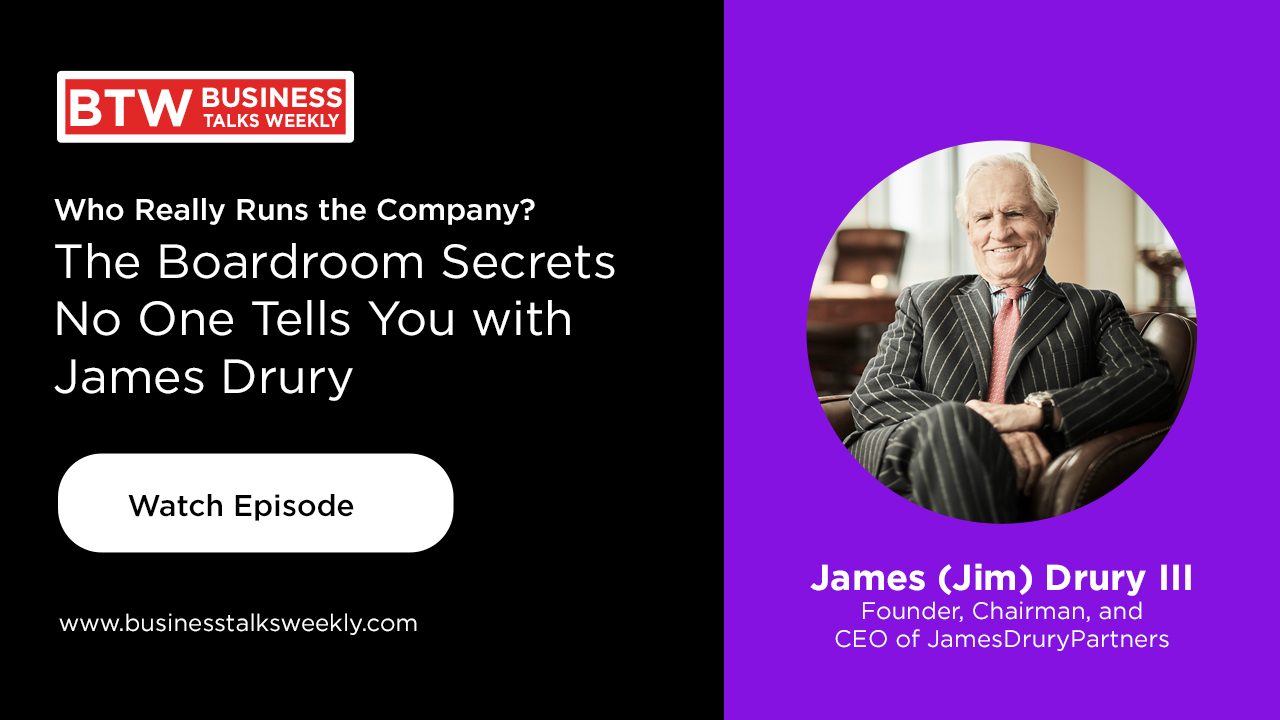In a world where executive search often runs on autopilot, James Drury is setting a bold new standard. As Founder and CEO of JamesDruryPartners, he isn’t just filling board seats—he’s redefining how corporate boards shape the future of their companies.
In a riveting episode of the Power Talk Show, Drury pulls back the curtain on what makes a truly effective board and how his firm’s reverse board search model is transforming board recruitment across corporate America.
Reinventing the Executive Search Model
While traditional executive search firms respond to board requests with a shortlist of qualified candidates, James flipped the script. He introduced the reverse search model—a process that empowers executives to choose the boards they wish to serve on.
“We’re not selling anything to the board. We’re bringing high-value leaders to their attention—people they didn’t know they needed,” said Drury.
The process? Deep profiling, targeting ideal boards across sectors, and offering board members candidates they would rarely discover through conventional methods. This has placed leaders on prestigious boards—one example being Richard Dixon, now CEO of Gap Inc., whose placement began with Drury’s method.
What Makes a Great Board Director?
Drawing from decades of experience and over 500 board placements—including 35% of the Fortune 100—Drury shares that humility, strategic insight, and the ability to ask sharp questions without offering directives are core traits of impactful board members.
Interestingly, self-evaluation often reveals that the most effective directors rate themselves lower, while underperformers overrate their contributions—a finding from one of Drury’s earliest board evaluation projects.
Measuring the “Weight of the Board”
Through a proprietary metric system, JamesDruryPartners quantifies what he calls the “board weight”—a reflection of business acumen within a boardroom. CEOs and high-level operators rate higher than specialists or function-specific members. While acknowledging the importance of DEI, Drury warns that overcorrecting for diversity at the expense of executive experience can dilute board strength.
“The board makes only two decisions—who owns the company and who runs it. Everything else is management’s job.”
Common Myths about Boards
Drury’s final note hits hard: “Boards don’t run companies. Management does.”
It’s a misconception held by many outside the boardroom. The board’s role is not operational—it’s strategic, governance-driven, and focused on leadership selection and shareholder representation.
Why This Matters Now
As corporate responsibility and innovation demands increase, the role of the board is more crucial—and complex—than ever. Drury’s approach not only ensures that companies gain directors who are strategic assets, but also helps top-tier leaders fulfill their potential in governance roles that align with their values and experience.


